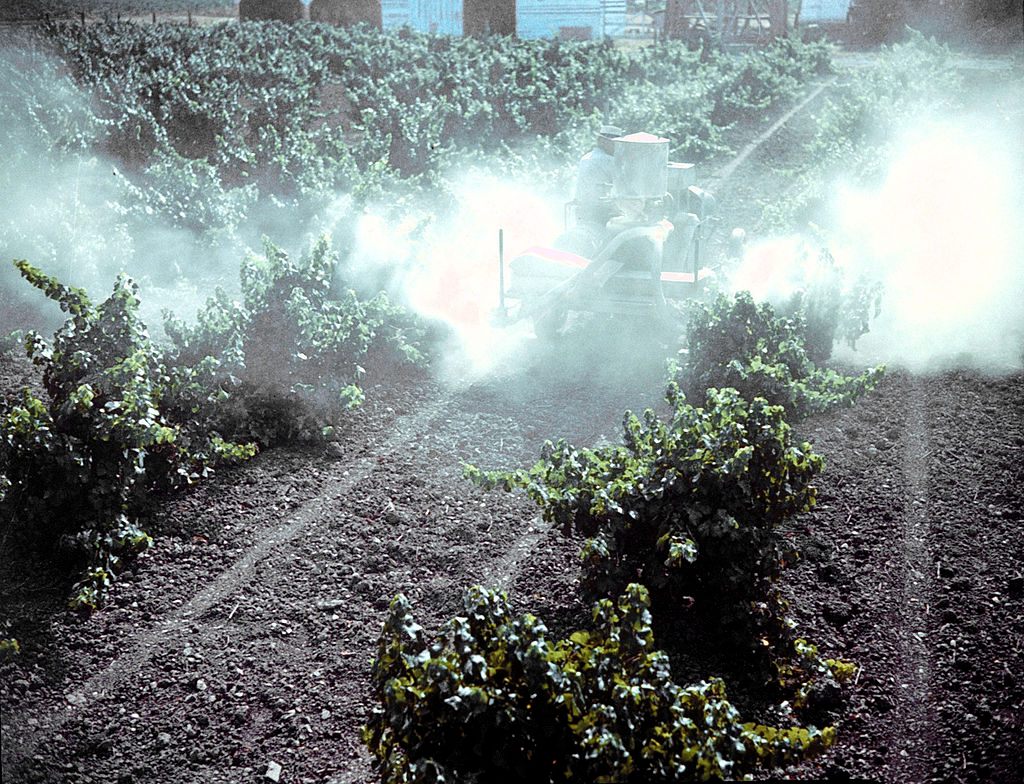How Blue Jeans Endangered the Lives of 6 Children in 1963
The fascinating case of the poisoned pants.

Greek mythology gave us the Shirt of Nessus, a garment so soaked in monster blood that even mighty Hercules withered in its embrace. While the world of chemistry makes no allowance for magical beast drippings, it provides us with more than enough deadly substances—and history offers at least one example of poisonous pants.
The year was 1961 and the setting no more mythic than Fresno County, California. An eight-year-old boy sat pale and glassy-eyed in his classroom. When his teacher noted the boy’s quickened pulse and exaggerated breathing, it was time to call mom. She picked her son up and took him to Valley Children’s Hospital, where his already confused state worsened with muscle twitches, abdominal pain, vomiting and diarrhea.
The case quickly spiraled into not only a medical emergency, but a mystery. The hospital called in Fresno pediatrician Dr. John P. Conrad, Jr., who conducted a barrage of tests to isolate the cause of such an aggressive illness. The results quickly ruled out shigellosis, a diarrheal illness caused by bacteria. Based on his experience with accidental insecticide poisonings in the area, Dr. Conrad came to suspect poison—and he had a hunch which one it could be. He ordered a blood test for the common insecticide organophosphate. It came back positive.

Organophosphate works on mammals as a nerve toxin. It binds up the enzyme acetylcholinesterase, which prevents it from decomposing the neurotransmitter acetylcholine—which you can think of as a chalkboard for nerve signaling. Without acetylcholinesterase around to clean the chalkboard between uses, the board just continues to relay the same outdated message from before. The old signal bombards the nerves, distressing multiple body systems.
Dr. Conrad now had the necessary information to treat the boy, but one question remained: How had he acquired the poison? The most obvious suspect was local agricultural use. Fresno was a big farming area, the pesticide was common, and it absorbs through the skin. And yet, when questioned, local sprayers said they hadn’t used organophosphate in recent weeks.
The question of exposure remained, but the patient himself improved. Six days after discharge from the hospital, Dr. Conrad inspected the boy once more and found him perfectly healthy. Then, on the ride home from the physical, the boy’s symptoms resumed with a vengeance.
After stabilizing the boy once more with fluids and a pair of powerful poison blockers, Dr. Conrad and the Fresno County Public Health Department turned their attention once more to the mystery of transmission. Where had he come into contact with organophosphate?

A search of the family car, garage and home turned up negative, but inspection of the boy’s clothes finally cast suspicion on a mundane pair of blue jeans. Indeed, they proved contaminated with organophosphate. Each time he slipped them on, the poison in the fabric began its work anew. The boy’s mother revealed she’d bought five pairs at a recent trucking company salvage sale.
The insecticide’s stain proved difficult to distinguish on the pants, save around the label and seams, but a health department test revealed just how much organophosphate had been absorbed by the jeans. They placed the five pairs of unwashed jeans in a caged mosquito colony and watched for signs of distress among the insects.
According to Dian Dincin Buchman’s “The Mystery of the Poisoned Boy,” published in a 1994 edition of ChemMatters, the jeans not only killed the entire colony within 15 minutes, they also wiped out a second, separately enclosed colony in the same lab a mere five minutes later. Around this time, a second poisoning case emerged in the Fresno area: an eight-year-old male patient and yet another pair of poisoned pants.
According to a 1963 Journal of the American Medical Association article co-authored by Dr. Conrad, the Fresno County Health Department and the state Public Utilities Commission began a search for the source of the poisoning. Local TV, radio and newspapers urged anyone who had bought jeans at a salvage sale to bring them in.
The investigation quickly solved the rest of the mystery. Eight months earlier, the blue jeans had shipped in a truck alongside machinery and chemicals. An accidental spill of the organophosphate pesticide Phosdrin contaminated 10 pairs of jeans. While the chemical dried and went undetected, the client returned the jeans to the trucking company due to their less-than-shelf-worthy appearance. Stuck with them, the trucking company sold them off at a salvage sale.

The chemical spill ultimately poisoned six children. It was a miracle no one died, especially when you consider this fact from a 1963 American Journal of Nursing article: The five-gallon insecticide spill contained enough organophosphate to kill 9,000 eight-year-old children.
Following the case, the California legislature introduced a bill prohibiting the shipment of hazardous chemicals alongside food or clothing. Tighter laws and industry standards have improved shipping conditions since the poisoned pants incident, but cross contamination remains an issue, especially in international, bulk cargo trade.
Still, if we’re to learn anything from the 1963 case of deadly jeans, it’s that you don’t have to be the son of a Greek god to risk the wrath of poisoned pants.









Follow us on Twitter to get the latest on the world's hidden wonders.
Like us on Facebook to get the latest on the world's hidden wonders.
Follow us on Twitter Like us on Facebook